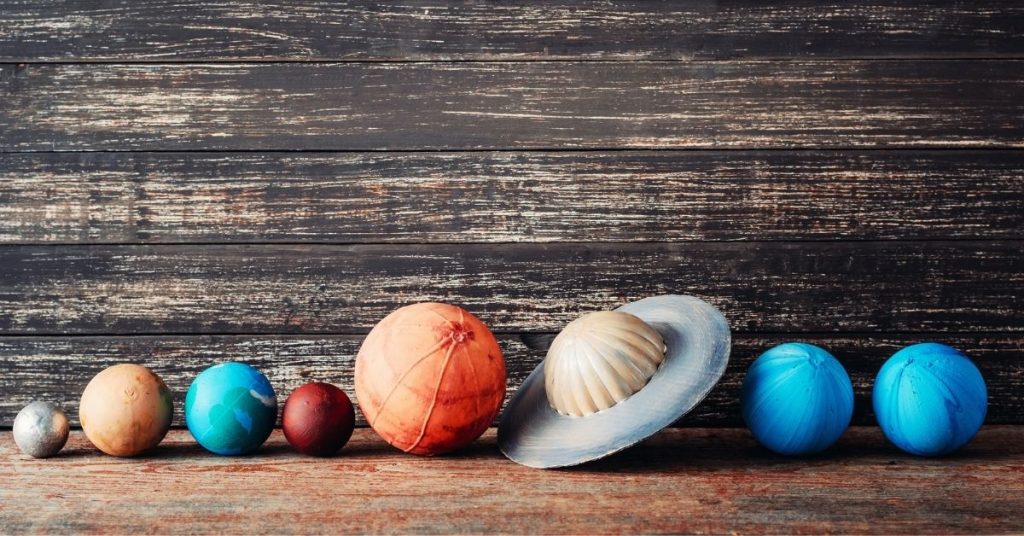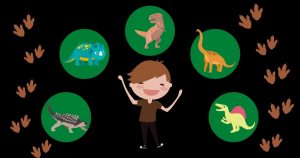Solar System and Beyond
How Well Do You Know Our Solar System?
You know that Mercury is the smallest planet and Jupiter the largest. But do you know which planet's day is longer than its year? Do you know what's in the center of our galaxy? And do you know about Planet X? Test your solar system savvy with this stellar quiz.

Did you know all these interesting facts about our solar system?
For a challenge, take the quiz below first! Then come back and explore this section in more detail.
The Milky Way
- There are more planets than stars in our galaxy.
- When you look up into the night sky, every star you see has, on average, at least one planet.
- The Milky Way’s stars are arranged in a pinwheel pattern with four major arms. Our solar system is in one of those arms, about two-thirds of the way outward from the center.
- At the center of our galaxy is a supermassive black hole.
- Our nearest major neighboring galaxy is called Andromeda.
- Ninety-five percent of the Universe is dark energy and dark matter.
The Sun
- The Sun is one of at least 100 billion stars in the Milky Way.
- It is the largest object in our solar system, comprising 99.8% of the system’s mass.
- If the Sun were as tall as a typical front door, the Earth would be about the size of a nickel.
- The Sun orbits the center of the Milky Way Galaxy.
- The Sun rotates, and since it is not a solid body, different parts of it rotate at different rates. At its poles, the Sun rotates on its axis once every 36 Earth days, but at the equator it spins once every 25 days.
- When the Sun starts to die, it will swell so big that it will engulf Mercury and Venus and maybe even Earth.
Mercury
- Mercury is the smallest planet, only slightly larger than Earth’s Moon.
- It is also the fastest planet, travelling around the Sun in only 88 Earth days.
- One day in Mercury — that is, the time it takes to rotate or spin once on its axis — takes 59 Earth days.
- However, one day-night cycle on Mercury takes around 176 Earth days.
- It makes a complete orbit around the Sun in just 88 Earth days. Thus, one day-night cycle in Mercury takes two Mercury years.
- Temperatures can reach 430 degrees Celsius during the day — and it can drop to -180 degrees Celsius at night!
- In some parts of the planet, the morning Sun appears to rise briefly, set and rise again. At sunset, the same thing happens in reverse. This is because of Mercury’s elliptical—egg-shaped—orbit and sluggish rotation. (No, I don’t get it, either.)
Venus
- Venus is our closest planetary neighbor.
- It is the hottest planet in our solar system. The thick atmosphere traps the Sun’s heat, resulting in surface temperatures higher than 470 degrees Celsius — hot enough to melt lead!
- Its atmosphere is so heavy, if you were standing on its surface, you would feel like you were 1.6 kilometers underwater on Earth.
- Venus’ orbit around the Sun is nearly a perfect circle, the most circular of any planet.
- It makes a complete orbit around the Sun in 225 Earth days.
- Venus completes one rotation in 243 Earth days — the longest day of any planet in our solar system. In fact, one Venus day takes longer than a Venus year.
- This doesn’t mean, however, that it takes the Sun more than a year to rise and set on Venus. Because it rotates in the opposite direction of its orbital revolution around the Sun, one day-night cycle takes just 117 Earth days.
- Venus spins east to west, in the opposite direction from most planets (with the exception of Uranus, which also spins east to west).
- Because its axial tilt is only 3 degrees, Venus spins nearly upright, and so it does not experience noticeable seasons like in Earth.
Mars
- Mars is about half the size of Earth.
- The Egyptians called it “Her Desher” — “the red one.”
- Mars is home to Olympus Mons, the largest volcano in the solar system.
- A day in Mars is called a sol. It completes one rotation every 24.6 hours.
- A year on Mars lasts around 687 Earth days (or around 670 sols).
- The atmosphere in Mars is very thin, allowing the heat from the Sun to escape easily. If we were standing on the surface of Mars’ equator at noon, it would feel like spring at our feet (24 degrees Celsius) and winter at our heads (0 degrees Celsius).
- Contrary to popular belief, there is water on Mars today. However, because the atmosphere is so thin, liquid water cannot exist for long on the surface. Water on Mars can be found in the form of water-ice in the polar regions, just under the surface, as well as in salty water that occasionally flows down some of Mars’ hillsides and crater walls.
Jupiter
- Jupiter is over two times as massive as all the other planets COMBINED.
- If Earth were the size of a nickel, Jupiter would be as big as a basketball.
- Jupiter actually has the same ingredients as a star — it just did not grow massive enough to ignite.
- Even though it is the biggest planet, it has the shortest day in the solar system — only around 10 hours.
- A year in Jovian (Jupiter) time takes about 12 Earth years.
- Jupiter’s four largest moons are Ganymede, Callisto, Io and Europa. They are called the Galilean Satellites because they were observed by Galileo Galilei in the early 1600s. It took nearly 300 years before another moon (Amalthea) was discovered.
- Ganymede is the largest moon in the solar system and is actually bigger than the planet Mercury.
- Io is the most volcanically active body in the solar system.
- Jupiter also contains the largest ocean in the solar system, an ocean of liquid hydrogen.
- The iconic Great Red Spot in Jupiter is actually a giant storm — bigger than Earth in area — that has been raging for hundreds of years.
Saturn
- Saturn has the second-shortest day in the solar system, rotating once every 10.7 Earth hours.
- It makes a complete orbit around the Sun every 29.4 Earth years.
- Saturn’s rings are thought to be pieces of shattered moons, asteroids, or comets. Each ring orbits at a different speed around the planet.
- Saturn’s moons are said to have some of the most fascinating landscapes in our solar system. Titan has rivers, lakes and clouds of methane and ethane, while the icy ocean moon Enceladus has the whitest, most reflective surface in the solar system.
- Saturn is the only planet in our solar system whose average density is less than water.
Uranus
- Uranus rotates on its side — that’s why it’s known as the “sideways planet” and appears to orbit the Sun like a rolling ball.
- Like Venus, it rotates from east to west.
- Even though it’s bigger than Earth, one day on Uranus takes only about 17 hours. However, it takes around 84 Earth years to complete orbit around the Sun.
- Saturn’s unique tilt causes the most extreme seasons in the solar system. The Sun shines directly over one pole for one-fourth of a Uranian year — while the other half of the planet experiences a dark, 21-year winter.
- The methane in its atmosphere makes Uranus appear blue-green.
- While most of the other planets’ moons are named after characters from Roman or Greek mythology, Uranus’ moons are named for characters from the works of Alexander Pope and William Shakespeare.
Neptune
- Like Uranus, Neptune appears blue because of the methane in its atmosphere.
- Neptune is the only planet in our solar system that is not visible to the naked eye.
- One day on Neptune — the time it takes to rotate or spin once — takes about 16 hours.
- One year in Neptune — the time it takes to complete an orbit around the Sun — is about 165 Earth years. In fact, since its discovery in 1846, Neptune has only been able to complete one orbit (in 2011).
- Neptune is so far from the Sun that high noon there is only as bright as dim twilight here on Earth.
- Pluto’s oval-shaped orbit brings it inside Neptune’s orbit for a 20-year period every 248 Earth years, which means that there are times when Neptune is farther from the Sun than Pluto.
- Neptune’s moon Triton is the only large moon in the solar system that has a retrograde orbit — that means the moon circles its planet in a direction opposite to the planet’s rotation.
Kuiper Belt
- The Kuiper Belt is a donut-shaped region of icy objects beyond Neptune’s orbit.
- It is home to both Pluto — which has been nicknamed the “King of the Kuiper Belt” — and Arrokoth, the most distant and most primitive object ever explored by a spacecraft.
- The icy bodies in the Kuiper Belt are referred to as Kuiper Belt objects (KBOs) or trans-Neptunian objects (TNOs) and are believed to be leftovers from the solar system’s early history.
- Beyond the main part of the Kuiper Belt is a wide region populated by objects that have orbits tilted by tens of degrees. The dwarf planet Eris — which triggered the debate that led to Pluto being reclassified as a dwarf planet — is one of the scattered disk’s inhabitants.
- The Kuiper Belt is one of the largest structures in our solar system. (The others are the heliosphere, the magnetosphere of Jupiter, and Oort Cloud.)
- It is believed that the Kuiper Belt may be the source of the Centaurs — objects with orbits that travel through the space between the orbits of Jupiter and Neptune.
Planet X
- In 2015, astronomers from Caltech published mathematical modeling and computer simulation support for the existence of a giant planet far beyond Pluto in the outer solar system.
- It is hypothesized to be 20 times farther from the Sun than Neptune. One full orbit around the Sun may take 10,000 – 20,000 Earth years.
- However, for a planet to be considered discovered, it has to be directly observed, which Planet X hasn’t been — yet.
- Astronomers believe there might be a large, previously undiscovered planet beyond Pluto because its gravity would explain the behavior of some dwarf planets and other small, icy objects in the Kuiper Belt, which they had observed to follow orbits that cluster together.
Oort Cloud
- The Oort Cloud is the most distant region of our solar system.
- “In the silence and darkness between the stars, where our Sun appears as just a particularly bright star, a theorized group of icy objects collectively called the Oort Cloud coast along their orbits like lazy moths around a porch light.” – NASA
- Unlike the planets of our solar system, which orbit the sun in a flat plane, the Oort Cloud is thought to be like a spherical shell of icy, comet-like objects surrounding the Sun, planets and Kuiper Belt Objects.
- The Oort Cloud is so far away that NASA’s Voyager 1 spacecraft — which is currently travelling at a million miles a day — will only reach it 300 years from now. It is believed to be one-quarter to halfway from our Sun to the next star.
Solar System Challenge
You think you know the solar system — but do you? Prove it by answering all these questions correctly. 😉
How well do you know our Solar System?

Question
Your answer:
Correct answer:
You got {{SCORE_CORRECT}} out of {{SCORE_TOTAL}}
Your Answers
Take these quizzes next!
LEARNING AND GROWING
Learning / Education
Financial Education for Kids
Inspiration for Kids
LEARNING ABOUT THE WORLD
Books
Environmental Issues
Philippine Heritage and Culture
World History, Arts and Culture




